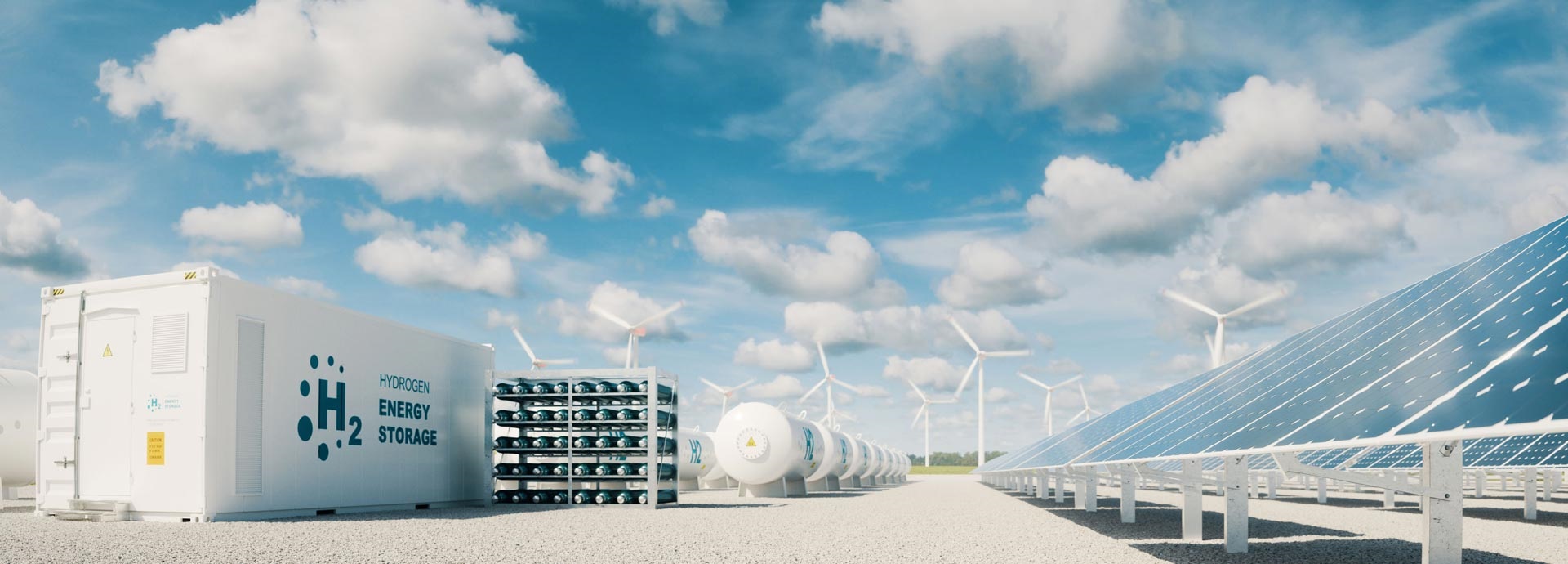

In just a few years, residents and businesses in Vaasa will be much closer to reaching firm decarbonisation goals. A pioneering venture is in the making: green hydrogen created with wind power will be used to balance electricity generation and to provide district heating.
The city of Vaasa, located on the west coast of Finland, is known as the home of the largest and most innovative energy hub in the Nordics. Wärtsilä recently teamed up with the City of Vaasa and energy companies EPV Energy and Vaasan Sähkö to build a Power-to-X-to-Power system and make possible a new way to store renewable energy.
”EPV Energy, Vaasan Sähkö and the City of Vaasa have ambitious decarbonisation goals: to be CO2 neutral during this decade. Together, we will lay vital steppingstones to a decarbonised future,” says Jukka Lehtonen, Director, EPC Projects, Wärtsilä Energy.
In this ground-breaking project, wind power will be used to create green hydrogen, which can later be used to generate electricity.
“The scale of this project is unique, as is the way we are planning to store wind power. Our aim is to bring considerable environmental benefits to both businesses and to the people in the Vaasa area,” Lehtonen confirms.
Short-term storage for hydrogen is key
The collaborative partners will use wind power to separate hydrogen from water by electrolysis. As the process is powered with renewable energy, it produces no carbon emissions, and the hydrogen is classified as green.
“The main obstacle to using green hydrogen is storage. While hydrogen can be stored as either a gas or a liquid, storing it is often not economically feasible for the energy sector,” Lehtonen says.
As a gas, hydrogen typically requires high-pressure tanks, while storing hydrogen as a liquid demands cryogenic temperatures.
“In this project, green hydrogen will be stored as a gas, but only for a few days at a time. Short-term storage for hydrogen is key,” Lehtonen describes.
The stored hydrogen will be used to create electricity on days when there is a shortage of wind power.
“Oxygen and heat are the principal by-products of this Power-to-X-to-Power process. To ensure that nothing goes to waste, the heat will be integrated into a rock cave heat storage in Vaasa and used to provide district heating for the city’s residents,” Lehtonen says.
We know that this project presents a remarkable opportunity to create Power-to-X-to-Power solutions that we can duplicate around the world.
Fostering collaborative partnerships
For Wärtsilä, collaboration with energy companies EPV Energy and Vaasan Sähkö and the City of Vaasa provides a unique opportunity.
“Our newest technology centre, Wärtsilä Sustainable Technology Hub, is located in the heart of Vaasa’s energy hub in Vaskiluoto in close proximity to our project partners. This provides great locational support for working together towards a shared goal,” Lehtonen points out.
The hydrogen storage, as well as the hydrogen, electricity, and heat production equipment will all be located on the grounds of EPV Energy’s Vaskiluoto power plant. Both the hydrogen production and storage capacity can be increased in the future.
Lehtonen points out that the project is also fostering deep collaboration internally at Wärtsilä:
“It has further fortified the synergy between our experts in Wärtsilä Energy, Wärtsilä Marine Power, and R&D. We are all very excited about the hydrogen engine power plant we are developing for this project. It presents a remarkable opportunity to create Power-to-X-to-Power solutions that we can duplicate around the world,” he envisions.

The world needs a multipath approach to decarbonisation
Lehtonen emphasises that while hydrogen will play a significant role in reaching global climate goals, it is only one part of the puzzle. Wärtsilä is conducting extensive research on several future fuels and engine technology to accelerate the development towards a cleaner world.
”Many people assume that hydrogen is the silver bullet that will enable decarbonisation in one smooth leap. This, unfortunately, is not the case. The world needs many fuel options to reach decarbonisation – hydrogen is just one sustainable option among others,” Lehtonen says.
”The need for clean energy is huge. What works in one setting might not be the right choice in another. The technology for utilising green hydrogen requires special circumstances, and it comes at a price.”
Other carbon-neutral fuels, such as synthetic methane, methanol and ammonia can be a much better fit for different locations and industries.
“At Wärtsilä, we actively research and develop a myriad of ways to enable decarbonisation for our customers in different industries. The key is to create emissions-free flexibility, which simply means that both energy storage and balancing power are optimised for a particular setting and renewable energy system,” Lehtonen remarks.
“For innovative energy forerunners like Vaasa, hydrogen is a promising option, but the Power-to-X-to-Power solution that we are developing is not limited to hydrogen; it could also utilise other carbon-free fuels.”
Showcasing a carbon-free future
Lehtonen emphasises that the collaboration in Vaasa will allow Wärtsilä to not only showcase what the future can look like, but also create reliable estimates for the costs of Power-to-X-to-Power projects and provide valuable information on necessary safety measures.
“Safety always comes first in the energy sector, and the safety measures in this project are state-of-the-art. Every nuance, nut and bolt of this project is extensively studied and pre-approved by the Finnish Safety and Chemicals Agency TUKES,” Lehtonen says.
”The Vaasa project provides an exciting learning opportunity. We still have obstacles to overcome, but if all goes as planned, Vaasa will be using green hydrogen made with wind power by the end of 2025. And armed with everything we learn and discover as we develop the project, Wärtsilä will soon be able to offer similar Power-to-X-to-Power solutions to customers on a global scale,” he concludes.


